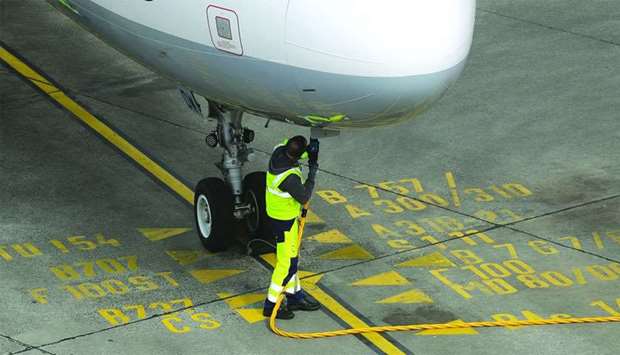Jet fuel price climbed to $80/b in June, 8% higher compared to the prior month, IATA said, citing concerns related to tighter oil supply conditions arising from elevated geopolitical risks as the reason.
Even though oil prices fluctuate with supply risks, lower global economic growth is expected to put downward pressure on oil demand, IATA said.
The number of available seats in the global airline fleet continued to increase for the third consecutive month (0.9% month on month) in June following the abrupt decrease stemming from 737 MAX groundings in March 2019, the report said.
Annual growth remains restrained at 3.2% compared to 5.8% in June 2018.
As many as 114 aircraft were delivered in June compared to 181 delivered in the same period a year ago, it said.
Some 170 aircraft returned to the fleet from storage while 57 aircraft left the fleet.
“Hence, net storage activity made a positive contribution to fleet growth in June,” IATA said.
All in all, the number of aircraft delivered in the first half of 2019 was lower than that seen in the same period last year (634 vs 771). On average 748 aircraft were delivered in the first half of the year between 2013 and 2018.
In terms of yields and premium revenues, IATA noted that global passenger yields (excluding surcharges and the revenue that airlines generate from ancillary services) rose in April for the first time in four months with the support of economy class yields.
As airlines were able to reflect some cost increases on the back of relatively stable passenger demand, economy class yields lifted month-on-month by 1.3%, which is the highest monthly increase seen since February 2018.
On the other hand, the “less price sensitive” premium cabin yields fell by 1.7% compared to the prior month.
Global average passenger yields in dollar terms were still 4.3% below their level compared to a year ago. As global economic growth prospects are being revised down, industry-wide passenger yields could be expected to remain under pressure, the report said.
Premium-class passengers accounted for 4% of total international origin-destination traffic in the first four months of 2019, slightly below the 4.1% result of a year ago, IATA said.
On the other hand, revenues from premium-class passengers improved by 0.3 percentage points to 27.4% of total international passenger revenues.
Premium passenger traffic growth outperformed its economy counterparts only in the North Atlantic and Asia-Southwest Pacific regions.
Nevertheless, in the North Atlantic, which is the largest premium market in terms of revenue, premium class fare growth lagged its economy counterpart.
Asia was the only one of the key regions where both premium class passenger and fare growth were below economy class, IATA said.

